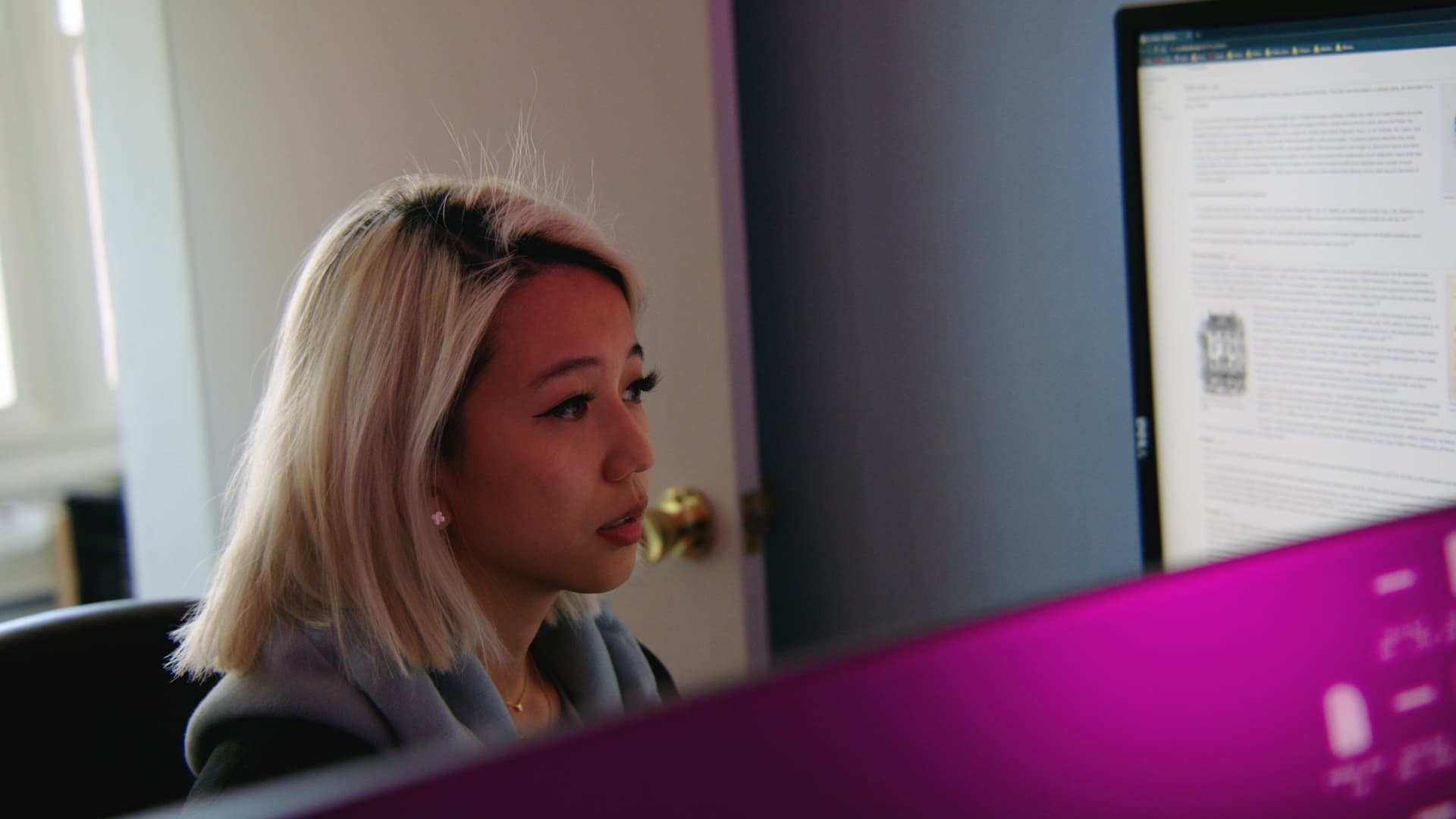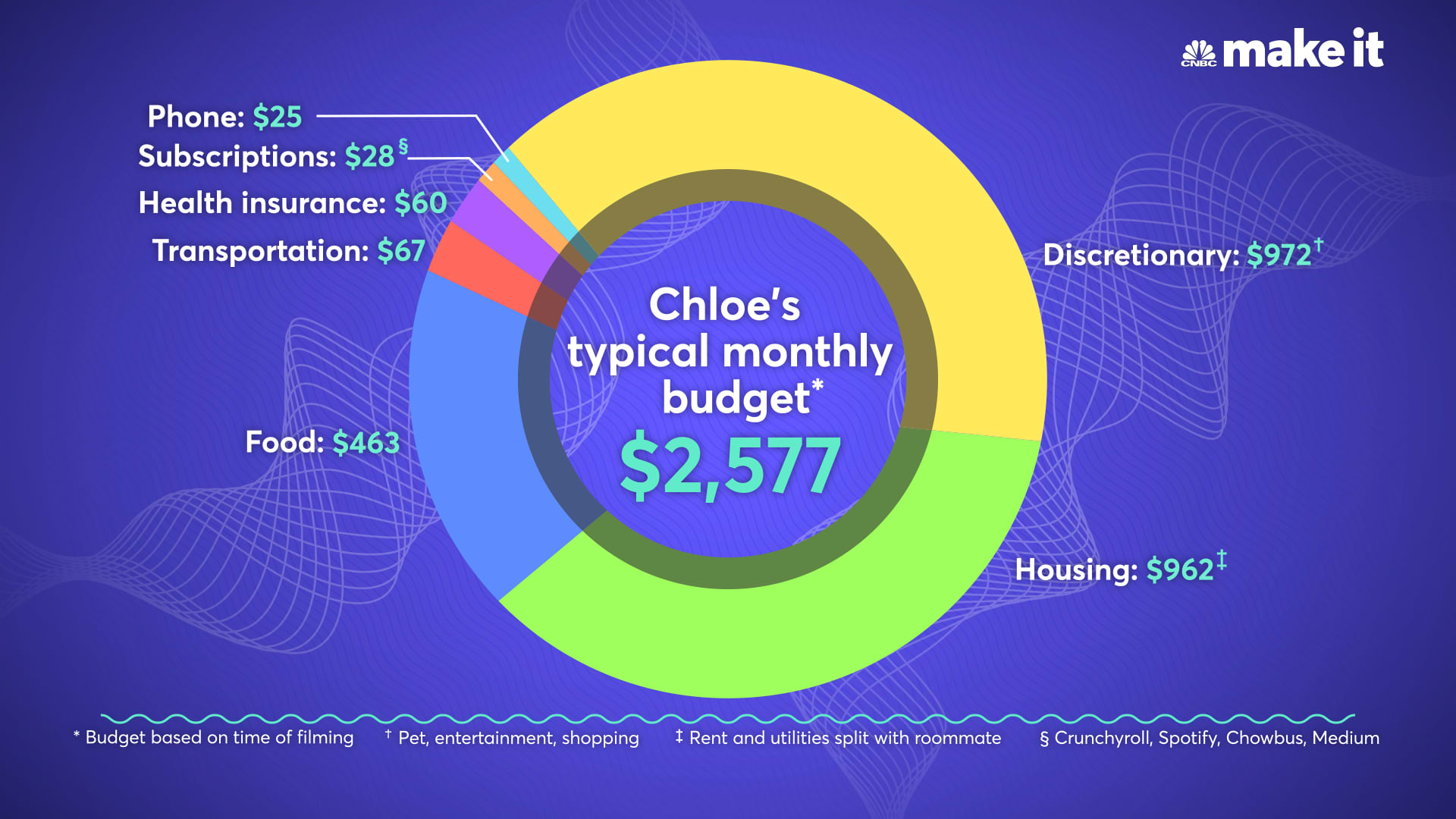
This story is part of CNBC Make It's Millennial Money series, which details how people around the world earn, spend and save their money.
Chloe Tan knows she comes from a privileged background.
She was born in Singapore and grew up attending international schools in Shanghai, where a lot of her classmates came from money. Her mom grew up wealthy and worked in private banking, while her dad works in biotechnology.
Today, Tan's parents cover her $20,000 quarterly tuition at the University of Chicago, where she's currently a rising senior studying economics and data science. She shares her mom's love of designer labels and recently saved $1,125 for a pair of Manolo Blahnik heels.
Get top local stories in DFW delivered to you every morning. Sign up for NBC DFW's News Headlines newsletter.
"I think in the U.S. people make a lot of assumptions about you based on how much money they think you have," Tan, 21, tells CNBC Make It. "I know some people on campus think I dress a little bit flashy, and some people don't care about it at all."
(For the record, she adds, most of her designer wares are gifts from her parents, which she sports "because it reminds me of them — not because I'm trying to flex.")
Tan would much rather talk about the creative ways she and her friends make money. She says growing up wealthy motivated her to start earning her own money early on. In middle school, she learned to buy clothes from wholesale retailers and resell them on social media. In high school, she started a tutoring business, which she continues today.
Money Report
In 2021, Tan made $55,770 from tutoring. Here's how she manages her time and money as a full-time international college student in Chicago.
Building her tutoring business
Tan started her tutoring business around 2016 when she was living in Shanghai. One day, she offered to help her younger brother and his friend prepare for a debate competition. Each week they'd bring a few more friends who wanted help with their schoolwork. After a while, Tan's mother encouraged her to start tutoring them for pay.
Today, Tan tutors 16 international students in Shanghai, ranging from 7th to 11th grade, on English literature curriculum for the International Baccalaureate program.
Tan spends about two hours a week preparing her lessons. She spends another five to six hours a week in back-to-back group tutoring sessions, mostly on Friday nights due to the 13-hour time difference between Chicago and Shanghai. She charges $67 per hour.
"As a college freshman, it was a little bit terrifying to have to schedule away all of my Friday nights," Tan says, though she no longer sees it as a sacrifice: "It's pretty easy to schedule your social life around something consistent," like going out with friends on Saturdays.

"Tutoring every Friday night has become a very consistent anchor in my life and in my very hectic college schedule."
Tan is paid for her tutoring in Chinese yuan, and earnings are deposited into her mom's bank account back in Singapore. For the most part, Tan hasn't touched this money. And according to tax laws in Singapore, nationals don't have to pay taxes on income earned overseas.
Tan is grateful for her parents' generosity and, as she's gotten older, recognizes her privilege "as a driving force as to why I need to work that much harder — because I've been given so much."
How she spends her money
Here's a look at how Tan typically spends her money, as of April 2022.

- Discretionary: $972 for shopping, entertainment and pet costs for her cat, Kaiju
- Rent and utilities: $962, split with one roommate
- Food: $463
- Transportation: $67 for Uber rides
- Health insurance: $60
- Subscriptions: $28 for Chowbus, Crunchyroll, Medium and Spotify
- Phone: $25
Tan's parents pay for her admittedly "astronomical" tuition, which will come out to a total of about $250,000 by the time she graduates next year. She's grateful her parents cover her tuition and school fees, plus a $1,000 allowance each quarter, which she uses with her earnings to cover housing, food and discretionary spending.
Her biggest spending category is shopping and entertainment. Tan enjoys retail shopping and prefers to invest in expensive designer items rather than fast fashion. She saved for two months to splurge on her Manolo Blahniks, which are "definitely the most expensive thing I've bought for myself."

She also enjoys spending money on food and drinks out, including treating her friends. She spent around $2,000 for her birthday dinner in October. "It's the Chinese-Indonesian way," she explains. "If you're the birthday girl, you pay for the entire table's dinner."
Managing her time
Tan says she sacrifices sleep to stay focused on her academics, social life and business. She also has attention-deficit/hyperactivity disorder, or ADHD, which affects her productivity. Some days she feels extremely motivated and can get a week's worth of work done, while the rest of the week, "I would just be in a slump and not do anything."

As Tan's college and work demands ramped up over time, she learned to divide her time into sprints. She'll spend about three days focused on nothing but schoolwork, then take a full day or two to relax through hobbies like watching anime, reading manga or painting.
"It's a little bit unconventional, and it only really works out because I have more control over my time right now because I'm a college student," she says.
Looking ahead
Tan's family prioritizes education, and she's the third generation in her family to attend college. She always knew she wanted to go abroad for college and chose to attend the University of Chicago so she could get a job and stay in the U.S. after graduation.
"I think as a college student and as an international student, it's my job to make that degree and education worth it, both to myself and for my career, and for my parents as well," Tan says.
Tan's "dream job" after college is to work as a product manager for a tech company.
She considers herself "lucky" for wanting a job in a STEM field, which makes it "significantly easier" to get a work visa with a bigger company in the U.S.

She currently has about $70,000 in savings and hopes to crack $300,000 by the time she's 27. She plans to use it to possibly attend graduate school or make a down payment on a house.
As for her tutoring gig, she'll keep at it as long as people are interested.
She considers herself more curious than entrepreneurial: "For me it's more of a 'why not?' Or, 'why can't I?' Or, 'I bet I could do that' kind of attitude, which sometimes works out and sometimes doesn't," she says. But, "that mindset has gotten me pretty far."
What's your budget breakdown? Share your story with us for a chance to be featured in a future installment.
Check out:
- This 25-year-old quit college to become a YouTuber—and made $3.7 million in 2021
- These parents in their early 20s earn $78,000 in Wyoming and just bought their first house
- This 26-year-old Google engineer earns $270,000 a year and still uses coupons
Sign up now: Get smarter about your money and career with our weekly newsletter






